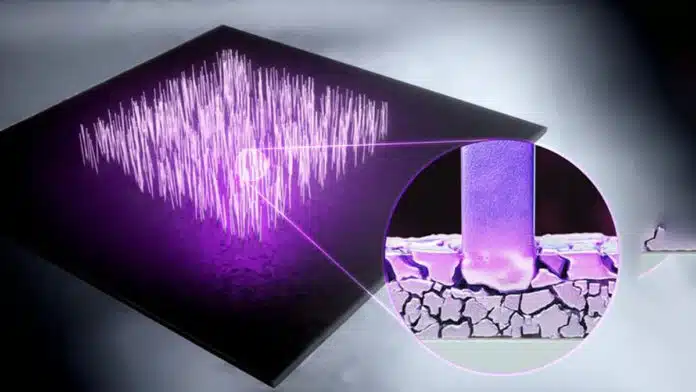
By Ashwini Sakharkar 10 Sep, 2024
Collected at: https://www.techexplorist.com/breakthrough-technique-growing-tiny-metal-nanowires/89404/
A breakthrough technique for growing minuscule metal nanowires (NWs) has been developed by a research team at Nagoya University in Japan. This innovation is poised to revolutionize next-generation electronics by enabling the mass production of pure metal NWs. The implications of this advancement extend to enhancing the efficiency of electronic production across various applications such as circuitry, LEDs, and solar cells.
The research findings, published in Science, represent a significant step forward in addressing the longstanding challenge of scaling up the production of NWs while preserving quality and purity. These findings have the potential to overcome the obstacles associated with working on such a small scale, primarily the transportation of metal atoms in a gas phase state that has traditionally hindered the large-scale production of these vital electronic components.
To address this challenge, a team led by Yasuhiro Kimura at the Nagoya University Graduate School of Engineering employed atomic diffusion in a solid phase state assisted by ion beam irradiation to fabricate aluminum nanowires (NWs) from single crystals.
Atomic diffusion involves the movement of atoms or molecules from high concentration areas to low concentration areas due to changes in stress state under heat. Through the use of ion beams, the team irradiated the crystal grains within the thin aluminum film to enlarge them at the surface layer. This led to alterations in stress distribution, directing the flow of atoms, which served as a method for providing mass atomic feedstocks for the growth of NWs at specific locations.
When heat was applied, there was an upward flow of atoms from the fine grains at the bottom to the coarse ones at the top, leading to substantial NW growth.
“We increased the density of aluminum NWs from 2×105 NWs per square cm to 180×105 per square cm,” Kimura said. “This achievement paves the way for bottom-up metal NW growth methods, which have so far been grown only accidentally and in small quantities. It can also be extended to other metals in principle.”
The resulting aluminum nanowires (NWs) offer a multitude of applications as nanocomponents for sensing devices and optoelectronics. Their exceptional features, including a large surface area, strong mechanical properties originating from their single crystal structure, and natural oxidation resistance, make them highly desirable for various technological advancements.
“We realized mass growth of forest-like metallic NWs using only three key processes: thin film deposition on a substrate, ion beam irradiation, and heating,” Kimura explained. “Our technique solves the urgent need to establish mass production methods, especially in the production of high-performance nanodevices such as gas sensors, biomarkers, and optoelectronic components.”
Journal reference:
- Yasuhiro Kimura, Yi Cui, Takamasa Suzuki, Yuki Tanaka, Takaaki Tanaka, Yuhki Toku, Yang Ju. Growth of metal nanowire forests controlled through stress fields induced by grain gradients. Science, 2024; DOI: 10.1126/science.adn9181

Leave a Reply